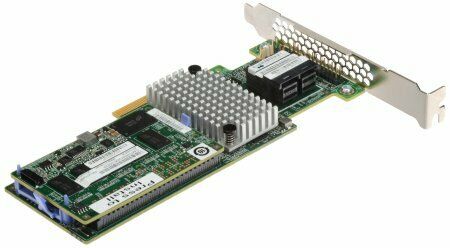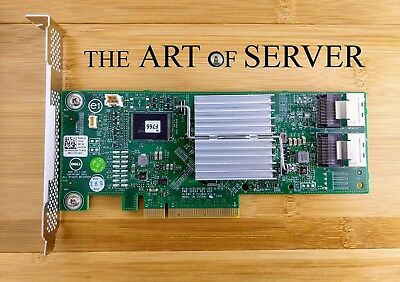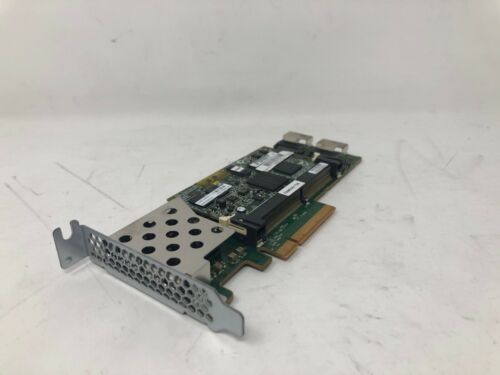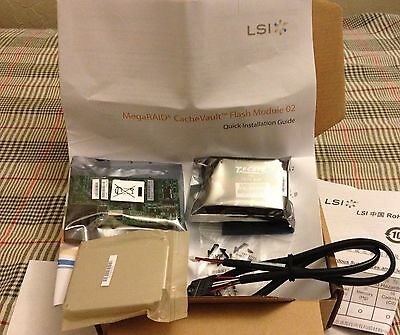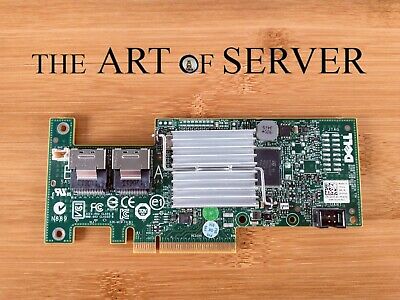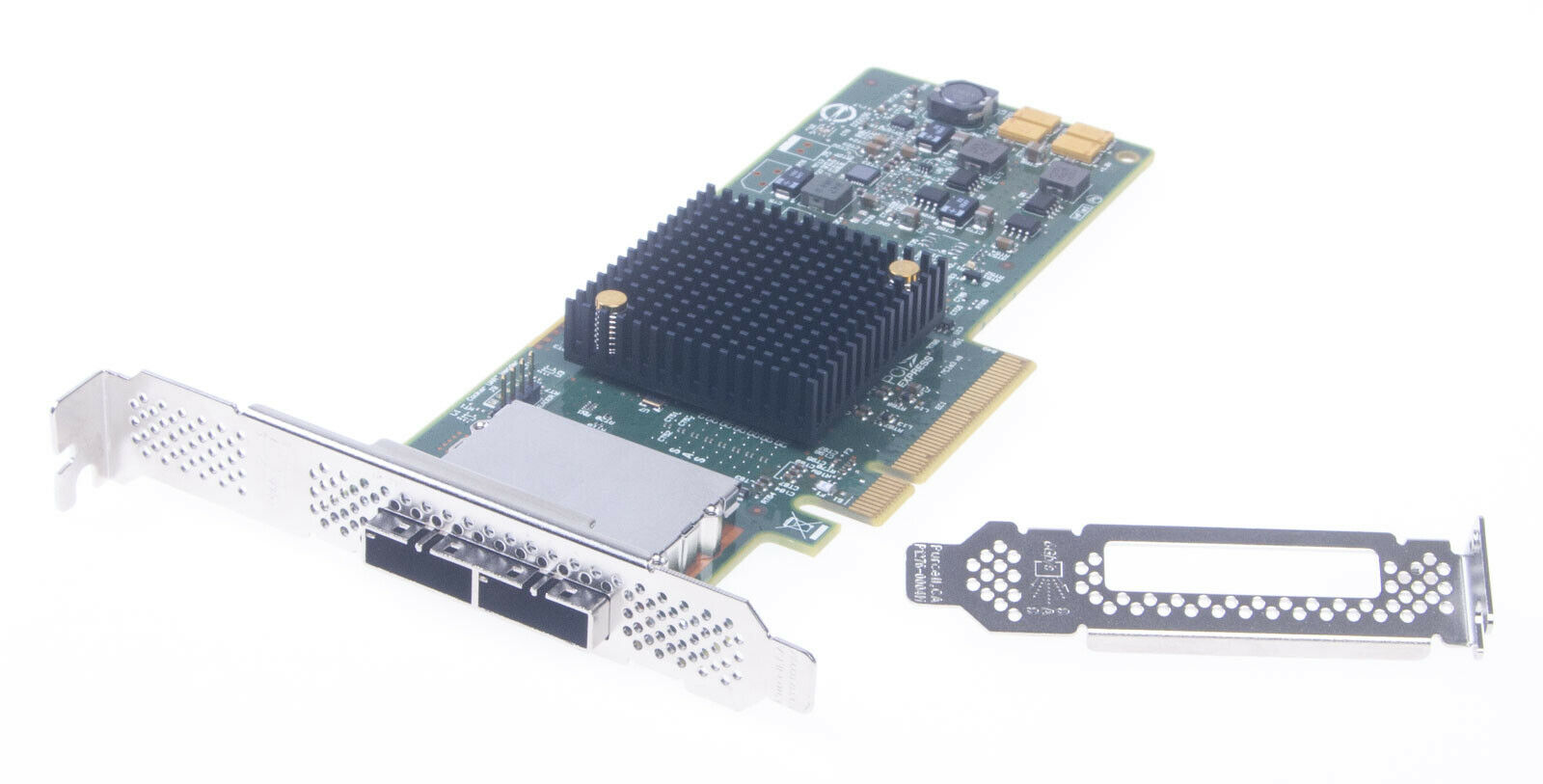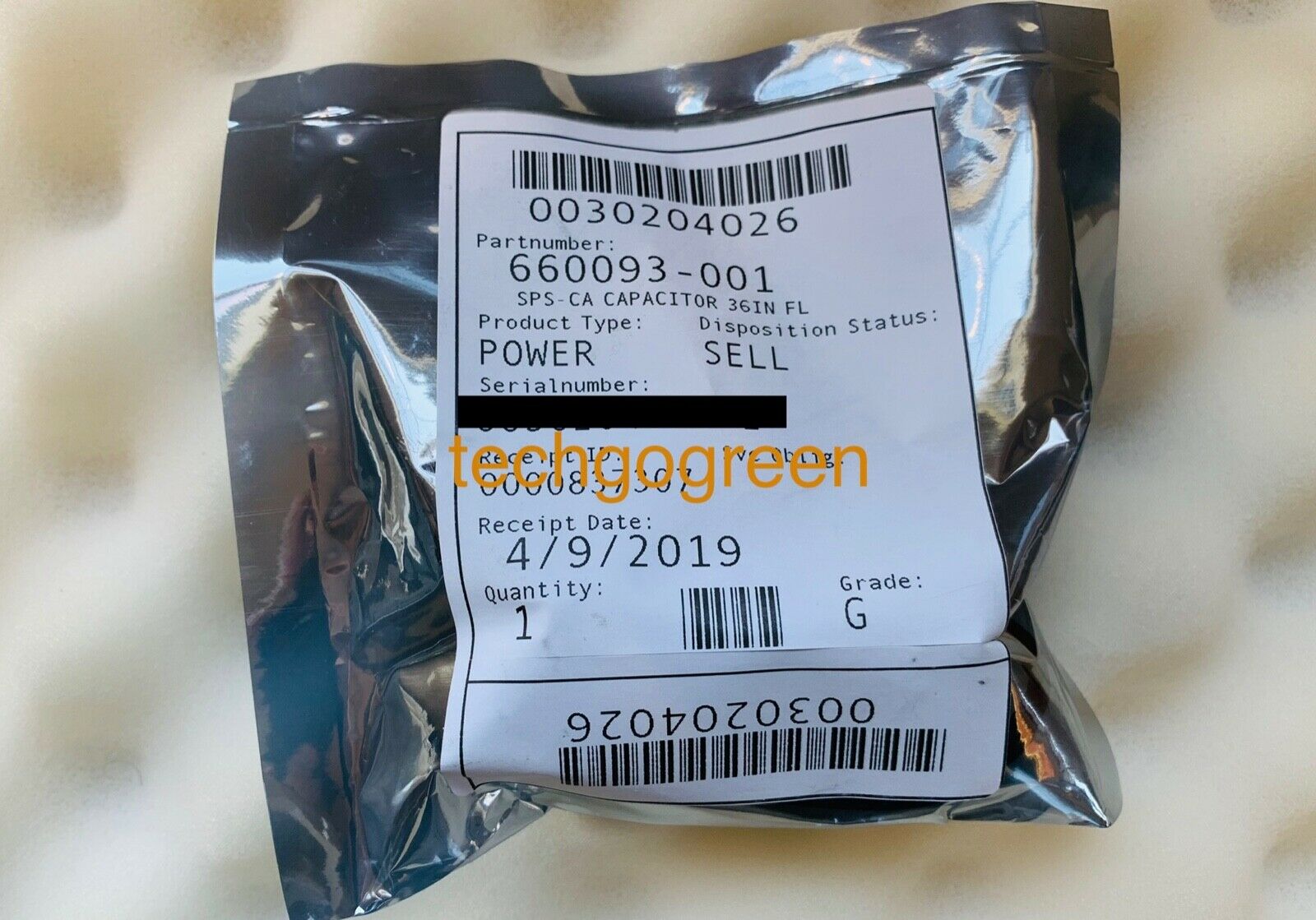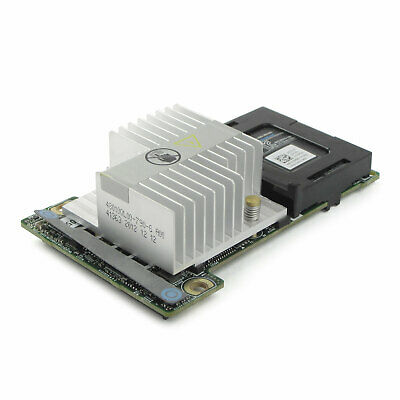-40%
Lenovo ServeRAID M5210 Controller SATA / SAS
$ 92.4
- Description
- Size Guide
Description
The ServeRAID M5210 option part number includes the following items:One ServeRAID M5210 adapter with a full-height (3U) bracket
One low-profile (2U) bracket
Documentation package
The ServeRAID M5200 Series 1GB Cache/RAID 5 Upgrade option part number includes the following items:
Cache module
Documentation package
The ServeRAID M5200 Series 1GB, 2GB, and 4GB Flash/RAID 5 Upgrade option part numbers include the following items:
One Flash/Cache module
One Offload power module
Two power module cables (425 mm and 925 mm)
Documentation package
The ServeRAID M5200 Series Zero Cache/RAID 5 Upgrade, RAID 6 Upgrade, SSD Performance Accelerator, and SSD Caching Enabler option part numbers include the following items:
One M5200 Series upgrade authorization letter
Feature Activation Instructions
Features
The ServeRAID M5210 and M5210e SAS/SATA controllers have the following standard features:
Auto-resume on array rebuild or array reconstruction after the loss of system power
Auto-resume uses non-volatile RAM (NVRAM) to save the rebuild progress during a host reboot or power failure to automatically resume from the last checkpoint. Auto-resume ensures that data integrity is maintained throughout the process. The card supports a number of features that can be implemented without rebooting the server. Applications, such as email and web server, benefit from avoiding downtime during the transition.
Online Capacity Expansion
Online Capacity Expansion (OCE) allows the capacity of a virtual disk to be expanded by adding new physical disks or making use of unused space on existing disks, without requiring a reboot.
Online RAID Level Migration
Online RAID Level Migration, which is also known as logical drive migration, can migrate a virtual disk from any RAID level to any other RAID level without requiring a reboot. System availability and application functionality remain unaffected.
Fast initialization for quick array setup
Fast initialization quickly writes zeros to the first and last sectors of the virtual drive. This feature allows you to immediately start writing data to the virtual drive while the initialization is running in the background.
Consistency check for background data integrity
Consistency check verifies that all stripes in a virtual disk with a redundant RAID level are consistent. The consistency check mirrors data when an inconsistent stripe is detected for RAID 1 and re-creates the parity from the peer disks for RAID 5 or RAID 6. Consistency checks can be scheduled to take place periodically.
Extensive online configuration options and advanced monitoring and event notification
Management tools provide convenience for the configuration of logical volumes and alerting when errors have occurred or are about to occur.
Patrol read for media scanning and repairing
Patrol read is a background sentry service that pro-actively discovers and corrects media defects (bad sectors) that arise normally as a disk drive ages. The service issues a series of verify commands, and if a bad block is discovered, the card's firmware uses RAID algorithms to re-create the missing data and remap the sector to a good sector. The task is interruptible based on controller activity and host operations. The firmware also provides an interface where the patrol read task can be initiated, set up for continuous operation, and terminated from a management application. Patrol read can be activated by a manual command or automatically.
Global and dedicated hot spare with revertible hot spare support
A hot spare rebuilds data from all virtual disks within the disk group in which it is configured. ServeRAID can define a physical disk as a hot spare to replace a failed drive. Hot spares can be configured as either global or dedicated. A global hot spare allows any physical drive to be designated as a hot spare. A dedicated hot spare allows the user to assign a hot spare drive to a particular array of the same drive type.
Drive roaming
Drive roaming occurs when the physical disks are changed to different ports on the same controller. When the drives are placed on different channels, the controller detects the RAID configuration from the configuration data on the drives.
Human Interface Infrastructure (HII) configuration utility for pre-boot array configuration and management
HII is a utility that is built into the ServeRAID controller that allows you to configure drive groups and logical drives before installing or booting the operating system.
MegaRAID Storage Manager management software
MegaRAID Storage Manager is an easy-to-use advanced RAID management application that is used across the entire family of ServeRAID M controllers. It allows you to configure, monitor, and maintain drive groups, virtual drives, and advanced features with an intuitive GUI, reducing administrative efforts and simplifying troubleshooting.
Note:
RAID 10, 50 and 60 drive groups do not support Online Capacity Expansion and Online RAID Level Migration. RAID 0, 1, 5, and 6 drive groups do not support Online Capacity Expansion and Online RAID Level Migration if two or more virtual drives are defined on a single drive group.
The following features are optional and require the respective upgrade to be purchased:
Support for RAID 6 and 60 with M5200 Series RAID 6 Upgrade (47C8706)
This is a Features on Demand upgrade and one upgrade is needed per server; all M5200 and M5100 series adapters installed in the server will have this upgrade enabled automatically.
MegaRAID SafeStore support for self-encrypting drive (SED) services
MegaRAID SafeStore encryption services offer instant secure erase and local key management for self-encrypting drives. This technology represents a step forward in securing data on a disk drive from any unauthorized access or modification resulting from theft, loss, or repurposing of drives. Instant secure erase permanently removes data when repurposing or decommissioning SEDs. SafeStore local key management provides the necessary management and protection of SEDs by using a simple pass phrase, security key identifier, and security key file that can be set and applied to all SEDs that are assigned to a ServeRAID adapter. This feature removes the complexity of managing each SED’s unique encryption key, and it essentially relieves the administrator of most of the daily tasks of securing data. The SafeStore is a part of any M5200 Series RAID 5 upgrade that is available: 47C8708, 47C8656, 47C8660, 47C8664, or 47C8668.
MegaRAID flash cache protection
MegaRAID flash cache protection uses NAND flash memory, which is powered by a supercapacitor, to protect data that is stored in the controller cache. This module eliminates the need for a lithium-ion battery, which is commonly used to protect DRAM cache memory on PCI RAID controllers. To avoid the possibility of data loss or corruption during a power or server failure, flash cache protection technology transfers the contents of the DRAM cache to NAND flash using power from the offload power module. After the power is restored to the RAID controller, the content of the NAND flash is transferred back to the DRAM, which is flushed to disk.
MegaRAID FastPath SSD performance acceleration
MegaRAID FastPath software provides high-performance I/O acceleration for SSD-based virtual drives by using a low latency I/O path to increase the maximum I/O per second (IOPS) capability of the controller. This feature boosts the performance of applications with a highly random data storage access pattern, such as transactional databases. The feature is activated by enabling M5200 Series Performance Accelerator (47C8710).
This is a Features on Demand upgrade and only one upgrade is needed per server; all M5200 and M5100 series adapters installed in the server will have this upgrade enabled automatically.
MegaRAID CacheCade SSD caching for traditional hard disk drives
MegaRAID CacheCade read/write software accelerates the performance of hard disk drive (HDD) arrays with only an incremental investment in solid-state drive (SSD) technology. The software enables SSDs to be configured as a dedicated pool of controller cache to help maximize the I/O performance for transaction-intensive applications, such as databases and web serving. CacheCade software tracks data storage access patterns and identifies the most frequently accessed data. The hot data is then automatically stored on the solid-state storage devices that are assigned as a dedicated cache pool on a ServeRAID controller with the M5200 Series SSD Caching feature (47C8712) enabled.
This is a Features on Demand upgrade and only one upgrade is needed per server; all M5200 and M5100 series adapters installed in the server will have this upgrade enabled automatically.
Note:
Not all SSDs support CacheCade feature. For details, refer to the following web page:
https://support.lenovo.com/us/en/documents/MIGR-5094754
Technical specifications
The ServeRAID M5210 and M5210e SAS/SATA controllers have the following specifications:
LSI SAS3108 12 Gbps RAID on Chip (ROC) controller.
PCI low profile, half-length - MD2 form factor (M5210) or onboard chip (M5210e).
Eight internal 12 Gbps SAS/SATA ports (support for 12, 6, or 3 Gbps SAS speeds and 6 or 3 Gbps SATA speeds). Up to 12 Gbps throughput per port.
Two internal x4 HD Mini-SAS connectors (SFF-8643).
PCI Express 3.0 x8 host interface.
Support for RAID 0, 1, and 10 standard; support for RAID 5, 50, 6, and 60 with optional upgrades.
Optional onboard data cache (DDR3 running at 1866 MHz) with the choice of the following backup:
1 GB (no battery backup)
1 GB, 2 GB, or 4 GB with flash backup
Support for SAS and SATA HDDs and SSDs.
Support for intermixing SAS and SATA HDDs and SSDs. Mixing different types of drives in the same array is not supported.
Support for intermixing of 12 Gbps and 6 Gbps drives
Connections to up to 32 internal drives, depending on the server model.
Optional support for self-encrypting drives (SEDs) with MegaRAID SafeStore.
Optional support for SSD performance acceleration with MegaRAID FastPath and SSD caching with MegaRAID CacheCade.
Support for up to 64 virtual disks, up to 128 arrays, up to 16 virtual disks per array, and up to 32 physical drives per array.
Support for logical drive sizes greater than 2 TB.
Support for Integrated MegaRAID (iMR) mode (no cache memory upgrades installed) or MegaRAID (MR) mode (requires 1 GB, 2 GB, or 4 GB cache memory upgrade).
iMR mode supports (no cache memory upgrades installed) the following features:
RAID 0, 1, and 10, and, optionally, 5 and 50
Fixed stripe unit size of 64 KB
Self-encrypting drives with optional Zero Cache/RAID 5 upgrade
Both RAID and JBOD (pass-thru mode with system drives) configurations
Up to 16 drives are supported in a RAID configuration.
Up to 63 drives are supported in a JBOD configuration. (JBOD drives can be used as bootable drives.)
MR mode supports (1 GB, 2 GB, or 4 GB cache memory upgrade required):
RAID 0, 1, 10, 5, and 50 and, optionally, 6 and 60 (Non-RAID is not supported.)
Configurable stripe unit size from 64 KB up to 1 MB
Self-encrypting drives
Optional SSD performance features (FastPath and CacheCade)
Compliant with Disk Data Format (DDF) configuration on disk (CoD).
S.M.A.R.T. support.
MegaRAID Storage Manager management software.
Feature upgrade matrix
The ServeRAID M5210 and M5210e provide support for RAID 0, 1, and 10 as standard capabilities. Additional optional functional upgrades are available to expand the standard capabilities. Some upgrades do not depend on other upgrades and can be applied to standard controllers (we call them primary upgrades). Certain upgrades cannot be applied to standard controllers and require that other upgrades are enabled before applying these upgrades (we call them secondary upgrades). There are two types of available upgrades: hardware (HW) and Feature on Demand (FoD). Hardware upgrades contain physical parts (for example, cache module or supercapacitor). FoD upgrades are software licenses. The following table lists the available primary upgrades, their capabilities, and types.
